
Sales promotions can take many forms, from simple price discounts available publicly to unique coupon codes sent based on the customer’s exact location, granted for specific products and only within a limited timeframe. There are plenty of promotion mechanisms, incentives and limitations you can use for almost limitless promotional scenarios. I have written this blog post to give you a general outline of types of promotion mechanisms, incentives and special promotion types that are commonly used across industries. It is a very high-level overview of promotion types you can use in your marketing strategy.
Learn more: Everything you need to know about promotion marketing
An automatic promotion (also known as a cart promotion, auto-applied promotion or automatic discount) is a promotion type that does not require a promo code to be applied at the checkout to work. Automatic discounts are more commonly used for site-wide or publicly available promotions. Auto-applied discounts are easier for customers, as they do not need to find, remember and apply the coupon code. It can increase promotion usage and reach. On the other hand, automatic discounts are more difficult to track and protect from abuse than, for example, unique coupons (that are more difficult to hack and easier to track on a 1:1 level).
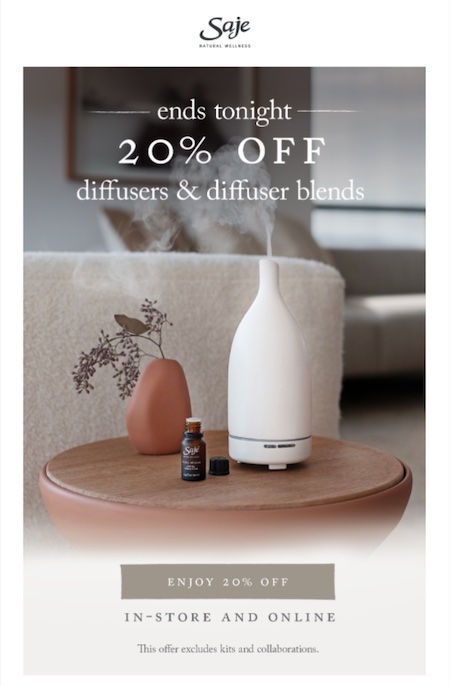
Discount coupon promotions are a promotion type that requires the customer to add a coupon code at checkout to apply the promotion. The coupon codes can be either public or unique.
A public coupon code (multi-use coupon code) is a single, usually publicly available, discount code that grants the same type of discount to all eligible orders and customers. It allows for customer targeting, you can, for example, share the public code only with some customers and, therefore, control who gets the discount and who does not. An example could be a HAPPYBIRTHDAY coupon code that is shared with customers on their birthday. It is a public coupon code, same for everyone, but only selected customers can use it.
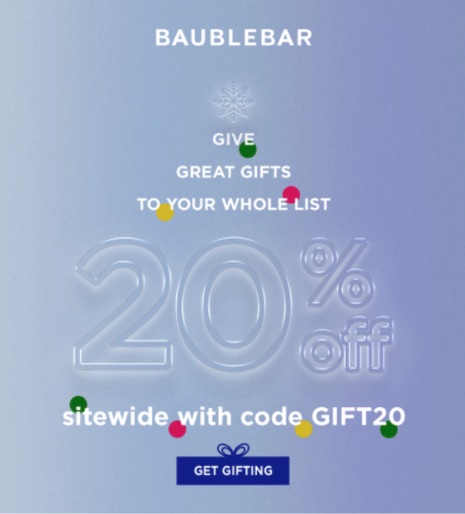
A unique coupon code is a single coupon code assigned to a particular customer. Unique coupon codes are usually part of a campaign sent to various customers, where each customer gets a unique code assigned to them. Unique coupon codes are difficult to hack, easy to track and can provide you with invaluable customer-level insights. They also allow you to do narrowly-targeted campaigns so you can send the promotion only to particular customers.

Learn more: The ultimate guide to coupon campaigns
Tiered promotions (staggered promotions) are promotions that offer different levels of discount. The tiers can be varied, for example, by the order value. The higher the order value, the bigger the discount offered.
Using tiered promotions allows you to implement different rules for different customers or different orders within the same campaign, instead of launching various promotions for various customers or various order levels. It helps you to manage your budget and, for example, grant a bigger discount for bigger orders to motivate customers to spend more (buy more, save more promotion).
A product bundle is a set of products sold together at a promotional price. The promotion applied to the bundle can be, for example, a new fixed price, amount off or percentage discount, or a free product or sample. They can be applied both as automatic promotion or with the use of a discount code. Product bundles can feature the same, similar, complementary or unrelated products that target the same audience. They can contain anything starting from two products.
Product bundling allows you to upsell your portfolio of products and motivate customers to either buy more of the same product or buy complementary products as well. It is a great tool to get rid of slow-moving products or to simply increase the average basket value. Offering a great product bundle can also convince customers to purchase from you instead of from the competitor if the deal seems like a better value for money.

BOGO is a special type of product bundle promotion. It features two of the same or the same category products and one of them (cheaper one, if the price is unequal) is given free of charge. Depending on the promotion, there may be a limit on the BOGO bundles per customer. The additional (free) product may or may not have to be added to the cart for the promotion to apply (in some cases it is added automatically to the customer’s cart).
A referral program is a scheme in which you incentivize customers to spread the word (refer) your business to their friends and family. Referral programs can be single-sided (rewarding only the referrer) or double-sided (rewarding both the referrer and the referred friend).
Referral programs are a great acquisition tool and usually have higher conversion rates than any other acquisition methods, as word of mouth is the most effective type of advertising. They also help you to retain your current customers by offering them additional incentives for spreading the word about your business.

A loyalty program is a retention-focused marketing strategy designed to encourage customers to continue to shop at or use the services of a business associated with the program. Loyalty programs can take many forms, from most popular point-based loyalty programs, through cashback, to loyalty programs offering non-monetary rewards or charity donations as rewards.
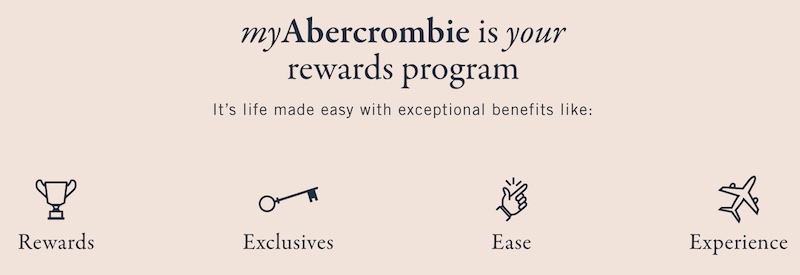
A giveaway (sweepstakes) is a type of contest where prizes are given to the selected winners. The winners are usually selected at random. Participants may be admitted automatically (based on the qualifying criteria) or manually to the participants’ list. They can be required to complete certain actions (for example, upload a photo for a contest) or based on other qualifying criteria (for example, all past customers). There can be one or more winners, as well as one or more prizes. The prizes can be assigned to random winners in a lottery mechanism or they can be assigned as an “instant win” scenario where every X person (for example, every 100th person) wins.

A gift card is a prepaid debit card that contains a specific amount of money available for use for a variety of purchases. Gift cards can be used in various ways, for example, sold as a standalone product, granted as an incentive to the customers, or given as a form of cashback for a bigger purchase.
Gift cards are a great way to motivate customers to come back to your store and increase repeat purchases. Giving a gift card as an incentive to the customer motivates them to come back to you and spend it due to loss aversion behaviour. Gift cards can also be used to maintain liquidity as customers do not cash out the incentive immediately, creating debit for your company.

Learn more: 13 gift card campaigns done like a pro
A flash sale is a punctual or recurring promotion and is basically an offer that only lasts for a very limited time, for example just one day or just one hour. Flash sales are a great way to create a sense of urgency for the customer to buy.
Flash sales give customers a feeling of urgency, therefore motivate them to use the promotion and forgo any mental analyses before completing the purchase. They are a great tool to increase emotional and unplanned purchases, especially on more frivolous, not basic-need items.
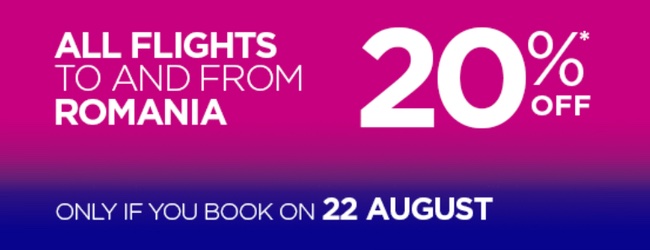
A seasonal promotion is any type of promotional activity (e.g., special offers, discounts, limited edition items) inspired by holidays, celebrations, and seasons. For example, Christmas sales, summer sales or back-to-school seasons. They tend to last longer, for weeks if not months. Seasonal promotions are a tool that helps you jump on the shopping bandwagon and get customers to look at your offers once they are already in the festive-shopping mood. They also help you to give a theme to your promo offers and surprise customers with outstanding marketing copy and graphic assets, which can help to attract customers more than standard offers and promotions that lack the extra touch.
Learn more: What is seasonal marketing?
Recurring promotions are repeated sales, for example happening every week or every month.
Using recurring promotions can help you to drive sales in the low-season or on the less frequented days. It can also help you to bring repeat customers who will be hunting for the new sale and anticipate it. One example of such a strategy would be a restaurant running a promotion every Monday for 20% off the whole cart, if Mondays are the lowest sales days. Another example could be a store offering a special Saturday Flash Sale when each Saturday they offer one product on -50% promotion. The latter strategy can motivate customers to check the offer each week, therefore bringing more traffic and attention to your store.
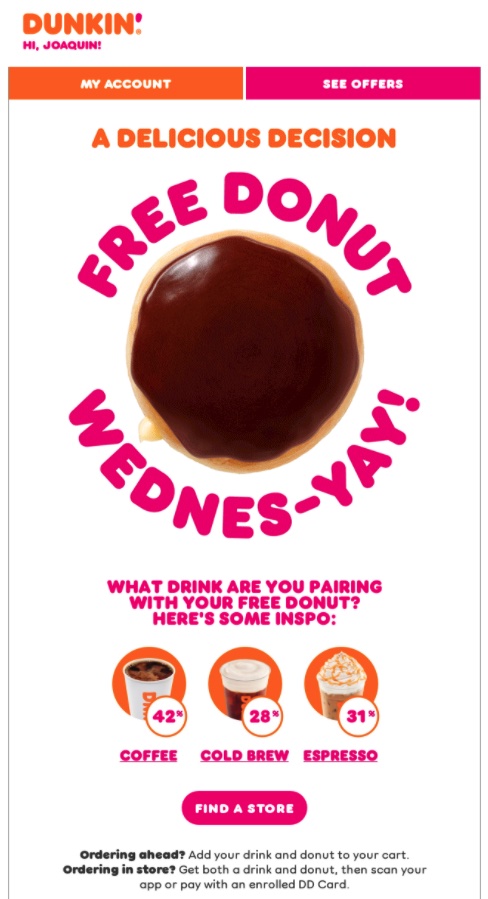
Happy hours are a type of recurring promotion. They are temporary (usually hourly), regular discounts historically granted on alcoholic drinks and nowadays on more food and beverage items. This promotion type is supposed to attract customers to the particular business in off-peak hours.
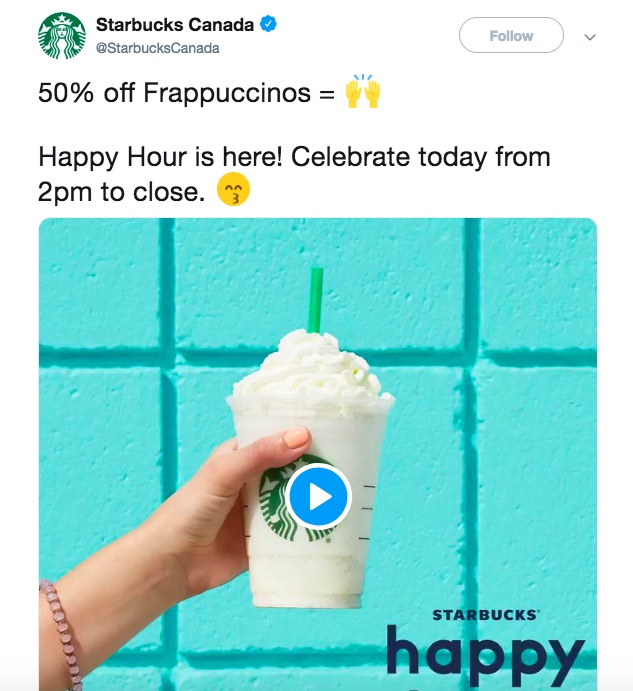
Learn more: The origins and examples of happy hour marketing
Promotions based on the customer’s location let you target the customers with more relevant offers. Geofence-based promotion is the most targeted type of location-based promotion. Geofencing is the use of GPS or RFID technology to create a virtual geographic boundary, enabling software to trigger a response when a mobile device enters or leaves a particular area. In the context of promotion and loyalty management software, geofencing can be used to define the promotion eligibility or trigger notifications and reminders related to the sales promotions. This can let you send highly targeted offers to customers being close to your store location or close to another, relevant, specific location.
Gamification is the strategic attempt to enhance systems, services, organizations, and activities to create similar experiences to those experienced when playing games to motivate and engage users. Promotion gamification means the promotions are made to look like a game or contain elements of a game to increase the participation levels. For example, a gamified loyalty program could contain levels, challenges, badges, an element of social recognition for the most loyal customers (“best players”), extra boosts (double points days), rewards unlocking similar to unlocking tools in a game, etc.
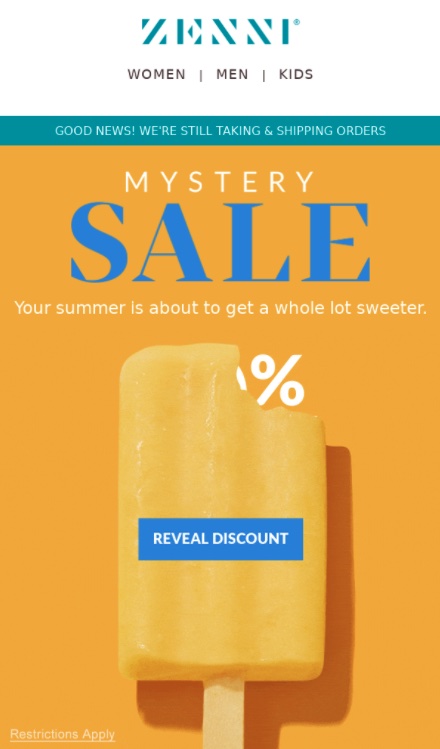
Learn more: 10 examples of gamified promotions
A nominal discount is a promotion type that grants a certain amount of a nominal off the original price. An example of a nominal promotion is Fossil’s $10 off promotion.
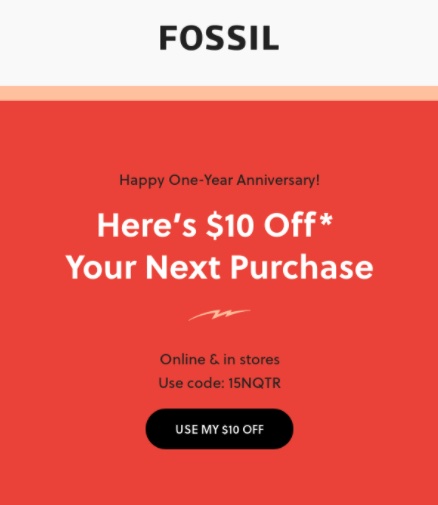
A percentage discount is a promotion type that grants a certain percentage off the full price of a product or order.
Fixed price promotion is a type of promotion that, instead of giving an amount off or a percentage off discount, assigns a new, fixed price to order, product, or product bundle. The benefit of using a fixed price over percentage or nominal off promotion is that the new price is usually clearer and more attention-catching than a sale. On the other hand, it does not state clearly what is the amount of discount granted (unless you display it as a crossed-out price).
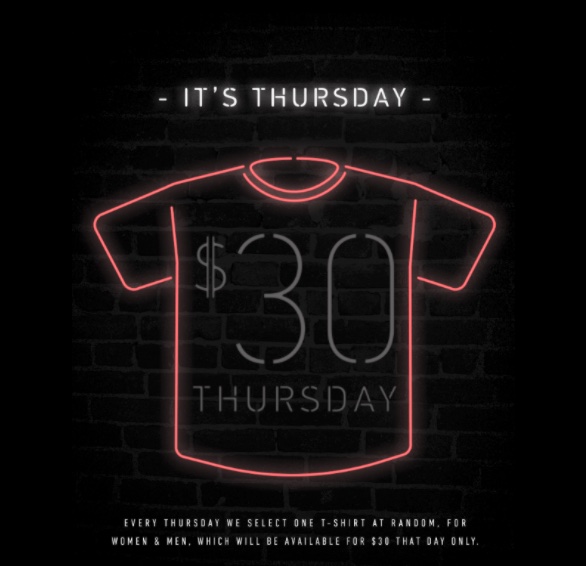
Free product, product samples or services can be granted as an incentive. This type of promotion can help you get rid of unwanted stock (slow-moving, close to expiry, old collections) and give your customers a chance to try other products from your offer, creating possibilities for future sales of these items (this is especially true when offering samples).
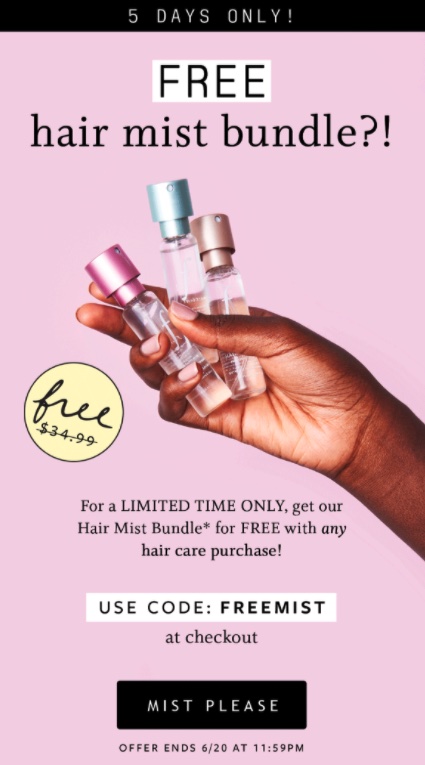
Unit discount does not have to grant a free product or service, it can also offer an upgrade of a product or service free of charge. An example would be a promotion launched by Evernote which granted a free premium account for 1 month for a customer's birthday.
A volume discount is a discount granted on large-volume purchases, for example, orders above 200 units get 5% off. A volume discount can be both, percentage or a nominal discount. Volume discounts are common in B2B sales to create customer retention and loyalty or as a part of the negotiated deal. They are less common in B2C sales but can be implemented on a smaller scale, for example buy 3+ units for a 10% discount.
Free shipping promotion grants free shipping on qualifying orders. There are other variants of shipping discounts, like a discounted shipping, discounted or free expedited shipping, next-day delivery free of charge, free packing for a present and other shipping-related promotions.
Free shipping is a relatively cheap promotion type that can help you stand out from competitors or convince customers who were hesitant to shop with you. Moreover, if you put lower limits on qualifying orders, like orders above $30 get free shipping, you can motivate customers to increase their basket value as they will be trying to get the free shipping deal.
A cashback discount is a promotion that gives part of the purchase back to the customer, directly to their store card, gift card, credit card, etc.
Price match promise is a type of promotion that returns o the customers the price difference if they find the same item at the same time cheaper in another store.
Promotions can take many forms and grant various types of incentives. It is not an easy task to find the right one for your goals and your target audience and it will take some research and experimenting to get the strategy right. If you are looking for inspiration for your next sales promotion, you can find 100+ promotion inspirations together with best practices and tips in our Inspirations Library.